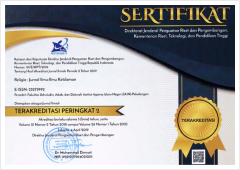The Philosophy Of Madhzab Mu'tazilah And Asy'ariyah In Interpreting The Personality Of God: Rationalism In The Tradition Of The Kalam Philosophy
Keywords:
Mu’tazilah, Asy’ariyah, Rasionalisme, God Personality, Falsafah KalamAbstract
This article explains the concept of the personality of God based on the Mu'tazilah and Asy'ariah. Mu'tazilah with a moderate framework and Asy'ariyah with a classic traditional framework. The philosophical tradition of Kalam Mu'tazilah has five main teachings called al asas al-khamsah, the principle of monotheism is a rationalist thought which explains that the nature of God is not separate from His Essence. Asy'ariyah has the concept of intellectual theological monotheism of Ahlussunnah wal Jama'ah. The Mu'tazilites deny the nature of Allah as substance, then regard these qualities as constant and unchangeable Essence. The Mu'tazilah affirms the Essence of Allah in the form of substance in the formulation of the concept of monotheism by assigning Tanzih Mutlaq to Allah from all the characteristics of creatures. Ash'ariyah still unites Allah in his Essence, it is not composed of internal or external elements, there will be no one who can match and resemble Him. The method used in this research was a literature study using a historical text approach in Mu'tazilah and Asy'ariyah thought. The result obtained is the concept of the personality of the Mu'tazilah God through reasoning between the Essence of Ijabiyah and the attributes of God which are inseparable. It means that the position of separate attributes of His Essence such as Irada, Sama', Basr, and Kalam are inherent characteristics of his essence/Dzāt. While the Ash'ariah does not provide attributes that are separate from His Essence. Thus, Mu'tazilah and Asy'ariyah have the same starting point, namely rationalism in monotheism. The common thread of thought between the two schools of thought will be seen, especially in attributing Allah indirectly to possessing human characteristics from one aspect and requiring Allah to have tools from another aspect. Hence, this paper specifically highlights the fundamental differences and similarities. It provides alternative answers for rational theological understanding.














